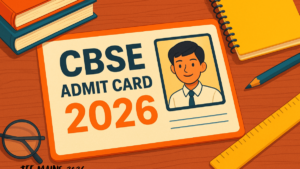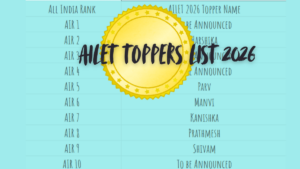CBSE Class 10 Social Science Half-yearly Sample Paper 2025: The half-yearly CBSE Class 10 Board Exam 2026 is a significant milestone for pupils in the 2025-26 school year. CBSE Class 10 Social Science Half yearly Sample Paper 2025 with Solutions helps students understand the format and difficulty levels of the science questions in the tenth grade. This midterm exam, usually given in September or October, is an important step in determining your knowledge of the material you’ve studied so far. Using this sample paper is a sensible and effective way to self-assess your preparation and earn the confidence needed to perform well, creating the groundwork for your final board exams. Students should practice the CBSE Class 10 Social Science Half Yearly Sample Paper 2025 using the solution provided by Adda Education on this page.
CBSE Class 10 Social Science Half Yearly Sample Paper 2025
The CBSE Class 10 Social Science Half-Yearly Sample Paper 2025 has been made by studying past exam papers. The board has released it to help students get ready for their exams.
This paper covers all parts of Social Science: History, Geography, Political Science, and Economics. By practising it, students can:
-
Learn the question pattern
-
Know the marking scheme
-
Practice different types of questions like MCQs, case-based, short, and long answers
The sample paper with detailed solutions (PDF) for the 2025–26 exam is available here for practice.
CBSE Class 10 SST Half Yearly Sample Paper Pattern
The Social Science or SST Exam for Class 10 is conducted for a total of 100 marks, which is divided into a written exam of 80 marks and a project of 20 marks. To pass the paper, they are required to complete the paper within the time allowed of 3 Hours. The Class 10 SST Paper consists of 38 questions in the Question paper. All questions are compulsory. The question paper has Four Sections: A-History, B-Geography C- Political Science, and D-Economics. Each Section is of 20 Marks and has MCQs, VSA, SA, LAs and CBQ.
| Types of questions | Marks Allocated | Instructions |
| Very Short Answer Type Questions (VSA) | Carry 2 marks each | Answers to each question should not exceed 40 words. |
| Short Answer Type Questions (SA) | Carry 3 marks each. | Answers to each question should not exceed 60 words. |
| Long answer type questions (LA) | Carry 5 marks each | Answers to each question should not exceed 120 words. |
| case-based questions (CBQ) | case-based questions (CBQ) with three sub questions and are of 4 marks each. | Answers to each question should not exceed 100 words. |
| Map-based questions, |
How to Attempt Class 10 SST Half-Yearly Sample Paper?
1. There are 38 questions on the Question Paper. All questions are mandatory.
2. The question paper is divided into four sections: A – History, B – Geography, C – Political Science, and D – Economics.
3. Each section has 20 marks and includes MCQs, VSA, SA, LAs, and CBQs.
4. Very Short Answer Type Questions (VSA) are worth 2 points apiece. Responses to each question should not exceed 40 words.
5. Short Answer Type Questions (SA) carry three points apiece. Answers for each question should not exceed 60 words.
6. Long-answer type questions (LA) carry 5 points each. Answers to each question should not exceed 120 words.
7. There are three case-based questions (CBQ) with four marks each. Answers to each question should not be longer than 100 words.
8. The map-based questions carry 5 marks with two parts- Q9. In Section A-History (2 marks) and Q19. In Section B -Geography (3 marks)
9. There is no overall choice in the question paper. However, an internal choice has been provided in a few questions. Only one of the choices in such questions must be attempted.
10. In addition to this, NOTE that a separate question has been provided for Visually Impaired candidates instead of questions having visual inputs, a map, etc. Such questions are to be attempted by Visually Impaired candidates only.
| CBSE Class 10 Sample paper of Other subjects | |
| Class 10 Hindi Sample Paper with Solutions | Class 10 SST Sample Paper with Solutions |
| Class 10 English Sample Paper with Solutions | Class 10 Maths Sample Paper with Solution |
| Class 10 Science Sample Paper with Solutions | Class 10 Computer Sample Paper with Solution |
CBSE Class 10 Social Science Half Yearly Sample Paper 2025 with solution
| SECTION A – HISTORY (20 Marks) |
Q.1 Who among the following prepared the series of prints called “Democratic and Social Republics” in 1848? (1 Mark)
(a) Garibaldi
(b) Giuseppe Mazzini
(c) Frederic Sorrieu
(d) Metternich
Answer: (c) Frederic Sorrieu
Q.2 Which event is considered the first clear expression of nationalism in Europe? (1 Mark)
(a) Unification of Germany
(b) French Revolution, 1789
(c) Industrial Revolution
(d) Treaty of Vienna
Answer: (b) French Revolution, 1789
Q.3 Which of the following symbol does the “broken chains “stand for? (1 Mark)
(A) Freedom.
(B) Strength
(C) Willingness to make peace.
(D) Heroism
Answer: (A) Freedom
Q.4 Which one option from the following is the appropriate reason for the formation of the Swaraj party? (1 Mark)
A. To ask for Poorna Swaraj for Indians.
B. To return to Council Politics.
C. To ask Dominion State for India.
D. To oppose Simon Commission.
Answer: (B) To return to Council Politics
Q.5 (A) Why did thousands of peasants join Gandhi in the Champaran satyagraha? Write any two reasons. (2 Marks)
Answer: Two reasons why peasants joined Champaran Satyagraha:
They were forced to grow indigo on 15% of the land and sell it at cheap rates (tinkathia system). They suffered from exploitation by European planters and demanded relief from unfair taxes and conditions.
OR
Q5. (B) ‘Sometimes the new crops could make the difference between life and death.’. Explain the statement with any two examples. (2 Marks)
Answer: New crops as life savers:
Potato and maize from Europe saved people during famines, as they could grow in less fertile soil.
Cotton and jute crops became major cash crops, supporting both livelihood and trade.
| SECTION B – GEOGRAPHY (20 Marks) |
Q.10 Which resource is both renewable and non-renewable depending on usage? (1 Mark)
(a) Solar energy
(b) Water
(c) Coal
(d) Forests
Answer: (b) Water
Q.11 Which Forest type is most abundant in Jammu & Kashmir and Himachal Pradesh? (1 Mark)
(a) Tropical Evergreen
(b) Tropical Deciduous
(c) Coniferous
(d) Mangroves
Answer: (c) Coniferous
Q.12 Which of the following animals is protected under Project Tiger (1973)? (1 Mark)
(a) Asiatic Lion
(b) Snow Leopard
(c) Tiger
(d) One-horned Rhinoceros
Answer: (c) Tiger
Q.13 Which state of India is the leading producer of manganese? (1 Mark)
(a) Odisha
(b) Karnataka
(c) Madhya Pradesh
(d) Jharkhand
Answer: (a) Odisha
Q.14 Which River is known as the ‘Sorrow of Bihar’? (1 Mark)
(a) Kosi
(b) Damodar
(c) Godavari
(d) Krishna
Answer: (a) Kosi
Q.15 Which of the following statements best evaluates the overall goal of the Pradhan Mantri Krishi
Sinchaee Yojana? (1 Mark)
A. Addressing the negative ecological effects of large dams by reducing water usage.
B. To provide better irrigation systems and sustainable water conservation practices for farmers.
C. Shifting farmers from traditional crops to more commercial, water-intensive crops.
D. Preserve the natural river flow and prevent the fragmentation of aquatic ecosystems.
Q.16 Why is tea plantation considered a commercial farming practice? (2 Marks)
Q.17 (A) “Water resources in India are under great stress.” Justify with three reasons. (5 Marks)
OR
Q.17 (B) ‘Coal is the most important and abundant fossil fuel in India.’ Justify the statement by evaluating the significant role it plays in the growth of the Indian economy in its different forms. (5 Marks)
| SECTION C – POLITICAL SCIENCE (20 Marks) |
Q.20 Which ethnic group in Belgium resented economic dominance of another? (1 Mark)
(a) French-speaking minority
(b) Dutch-speaking majority
(c) German-speaking minority
(d) Sinhala-speaking majority
Answer: (a) French-speaking minority
Q.21 In which year did Belgium shift from unitary to federal form of government? (1 Mark)
(a) 1948
(b) 1956
(c) 1993
(d) 2005
Answer: (c) 1993
Q.22 Identify the painting from the options given below. (1 Mark)
(a) Frankfurt Parliament
(b) Reichstag
(c) Duma
(d) The House of Parliament
Answer: (a) Frankfurt Parliament
Q.23 Two statements are given as Assertion (A) and Reason(R). Study the statements carefully and identify the correct alternative:
ASSERTION (A): Exclusive attention to caste can produce negative results in democracy.
REASON (R): It can divert attention from other important issues thus leading to tensions, conflicts and even violence.
Choose the correct option:
A. Both A and R are true, and R is the correct explanation of A.
B. Both A and R are true, but R is not the correct explanation of A.
C. A is true but R is false.
D. A is false but R is true
Answer: A. Both A and R are true, and R is the correct explanation
Assertion (A): Power sharing is desirable in democracy. (1 Mark)
Reason (R): It reduces chances of conflict between groups.
Answer: A. Both A and R are true, and R is the correct explanation
Q.24 Mention two features of local government in India. (2 Marks)
Q.25 Suggest two ways by which women still face inequality in Indian society. (2 Marks)
Q.26 Explain with three points how federalism promotes unity in diversity in India. (3 Marks)
Q.27(A) Analyse the role of a multiparty system in a democratic country like India. (5 Marks)
OR
Q.27(B) Evaluate the differences between the national and regional parties and assess the requirements for a regional party to become a national party.
| SECTION D – ECONOMICS (20 Marks) |
Q.29 Which of the following is NOT a development goal? (1 Mark)
(a) More income
(b) Equal treatment
(c) Better environment
(d) Increased discrimination
Answer: (d) Increased discrimination
Q.30 Which body publishes the Human Development Report? (1 Mark)
(a) World Bank
(b) IMF
(c) UNDP
(d) RBI
Answer: (c) UNDP
Q.31 Which sector is also called the “service sector”? (1 Mark)
(a) Primary
(b) Secondary
(c) Tertiary
(d) Organised
Answer: (c) Tertiary
Q.32 In India, which body issues ₹2 notes and coins? (1 Mark)
(a) RBI only
(b) Ministry of Finance
(c) SBI
(d) Both RBI & Finance Ministry
Answer: (b) Ministry of Finance
Q33. Match the following: (1 Mark)
| List I | List II |
| a. Outsourcing | (i) Growth of call centers |
| b. Spread of IT services | (ii) Expansion of service jobs |
| c. FDI in India | (iii) Access to foreign investment |
| d. Exchange of culture | (iv) Cultural exchange |
Answer:
a → (i) Growth of call centers
b → (ii) Expansion of service jobs
c → (iii) Access to foreign investment
d → (iv) Cultural exchange
Q.34 Which one of the following issues currency notes in India? (1 Mark)
(a) Finance Ministry.
(b) Reserve Bank of India.
(c) State Bank of India.
(d) Central Bank of India.
Answer: (b) Reserve Bank of India
Q.35 How does higher public investment in education benefit society? (3 Marks)
Q.36 Why is access to institutional credit important for small farmers? (3 Marks)
Q.37 Explain three major effects of liberalization on India’s economy. (3 Marks)
Q.38 Compare any five differences between organized and unorganized sector of economy. (5 Marks)
| Related Posts | |
| CBSE Class-10 SST PYQs | CBSE Class 10 Social Science sample paper |
| Class 10 SST Half Yearly Question Paper | CBSE Class 10th Social Science Syllabus |











 CBSE Admit Card 2026 for Private & R...
CBSE Admit Card 2026 for Private & R...
 AILET 2026 AIR 1: Check Full Toppers Lis...
AILET 2026 AIR 1: Check Full Toppers Lis...
 AILET Result 2026 OUT, How to Download S...
AILET Result 2026 OUT, How to Download S...






